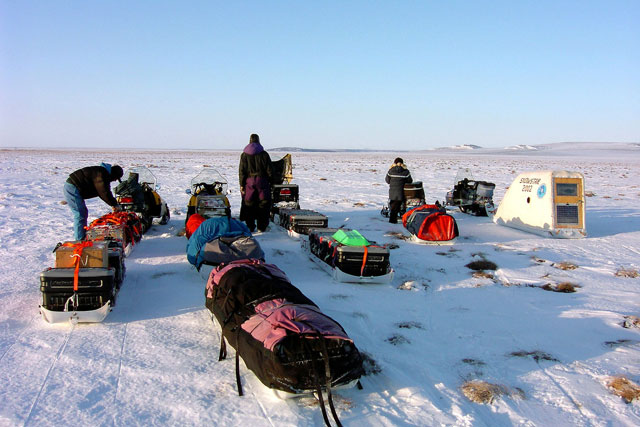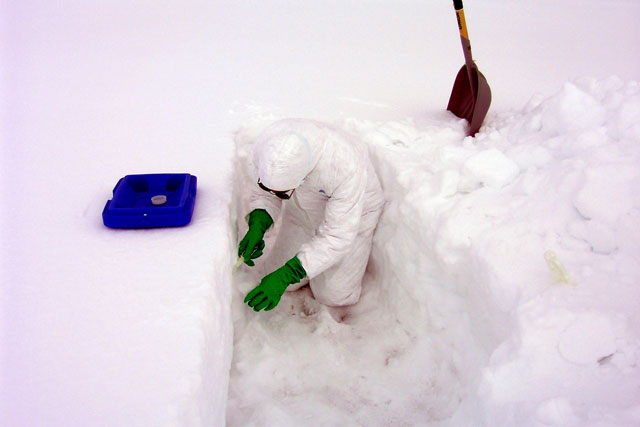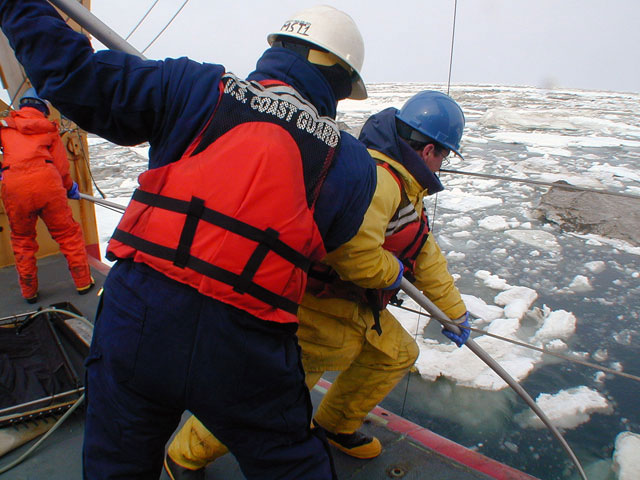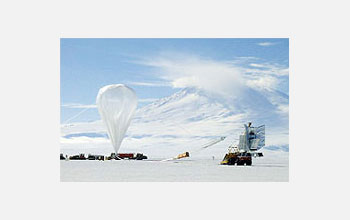
Extreme Living: Scientists at the End of the Earth
Means of Transportation

The Snow Science Traverse-Alaska Region (Snow STAR) team, their snowmobiles, and sleds. The covered sled is heated and houses the computers used in a number of tests done on the snow at each station. The SnowSTAR team left Nome, Alaska in March of 2002 to conduct a 35-day snowmobile traverse to scour the Alaskan tundra for clues to the role snow cover plays in climate change. The team analyzed the chemistry and composition of snow along the route to determine the source of the snow, and how much it has been affected by arctic haze.
Deep Inside

Chemical sampling of snow layers. Two classes of samples were taken along the route of the SnowSTAR traverse. Here, ultra-clean procedures are in use because these samples will be analyzed for trace elements and metals.
Rough Waters

Assisted by a member of the Healy's crew, Stephane Plourde, of the Woods Hole Oceanographic Institution, fends off ice flows to retrieve the sampling net during the Western Shelf-Basin Interactions research cruise off Barrow, Alaska. Long hours and hard work are elements of any scientific research cruise.
Balloon-based Astronomy

With Mt. Erebus, the world's southernmost active volcano, as a backdrop, the balloon that carried the BOOMERANG telescope on its 10-day trip around the Antarctic continent is inflated. The launch was preceded by two months of assembly at McMurdo Station, NSF's logistics hub in Antarctica.
Sign up for the Live Science daily newsletter now
Get the world’s most fascinating discoveries delivered straight to your inbox.









